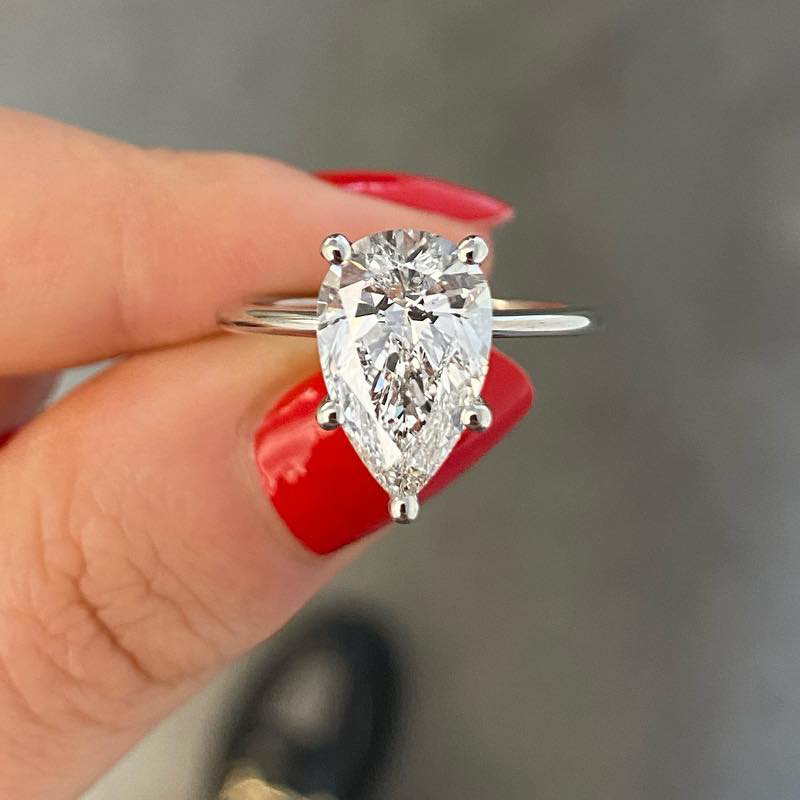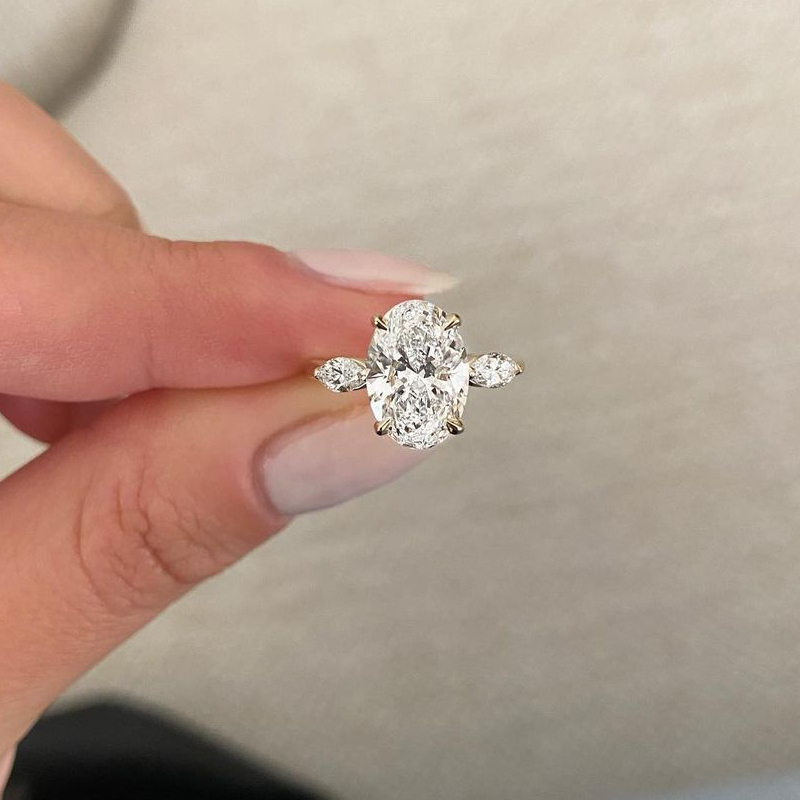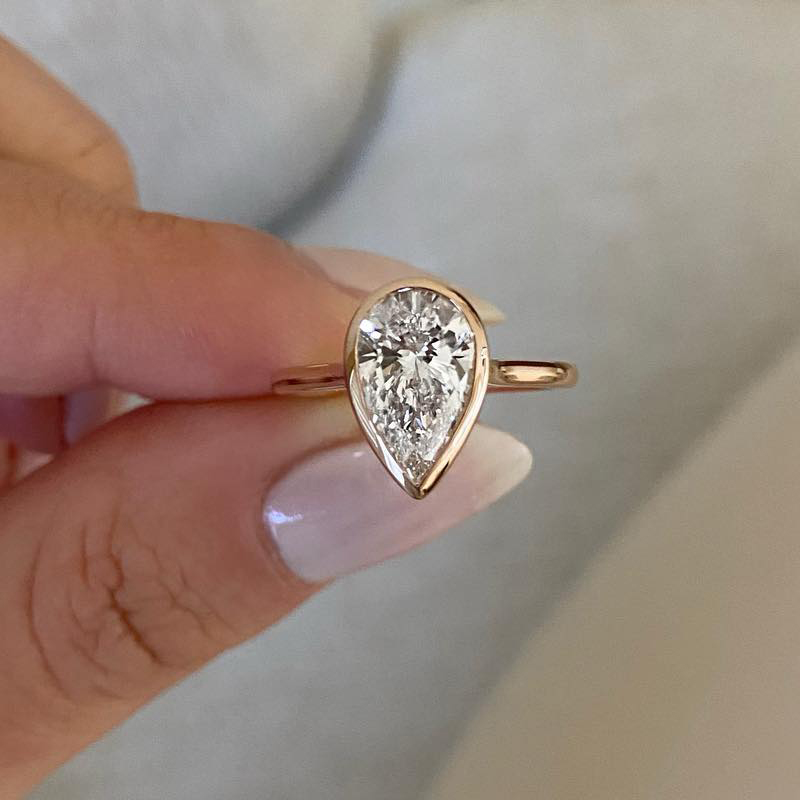Engagement Ring Decisions: Size vs. Clarity
Aug 02, 2023

Is bigger always better, or is a smaller stone with a higher clarity value?
Everyone has unique preferences and hopes for their engagement ring. Unless you have a perfect vision in your head already (and the budget to cover it), you may find yourself deliberating a few options along the way, though. Should you go for clarity or carat? Is bigger always better, or is a smaller stone with a higher clarity value?
If you’re facing that decision, the choice is tough – especially if you had your heart set on a particular look. There are a few situations where one factor matters more than the other (and vice versa) and some situations where you can strike a balance without changing the look of your ring.
When is Clarity More Important?
The bigger something is, the easier it is to see its faults. That’s true for diamonds, too. Choosing a large stone with a lower clarity grade means that it’s much easier to see all of its imperfections. You’re basically choosing to blow them up and put them on display. Bigger is sometimes better, but not always. If you’re looking at a flawed stone, an “off” cut, or a cloudy diamond, a bigger carat size won’t do your ring any favors.
The lower your clarity grade, the more obvious flaws become. Once you reach a level where you can see inclusions with the naked eye, you (and everyone else who looks closely) will see them in your big stone.
- Consider the option for a smaller diamond with a higher clarity grade. Otherwise, you’re risking the look of your ring. By opting for a smaller, more clear diamond instead, you’re getting the sparkle, brilliance, and fire that many people crave in their engagement rings.
- Go smaller to hide poor clarity. If, for whatever reason, you can’t get a higher clarity grade for your stone, going smaller still helps to hide its flaws. You’re more likely to find stones that have them in less obvious locations or you’ll be able to draw attention elsewhere with the setting and design.
When is Carat More Important?
If your heart is set on a big stone and going smaller isn’t on the table – get the big stone. Your engagement ring is for you, at the end of the day. If you love the look of a larger diamond, it’s unlikely that going smaller for the sake of clarity will feel satisfying. Of course, if your budget allows for a larger stone without sacrificing clarity or something else, nothing is stopping you!
Choosing an engagement ring is all about personal preference, and the wearer’s opinion should ultimately matter more than anyone else’s. While high-clarity diamonds tend to be more pleasing to the eye for most people, that isn’t the case for everyone!
How to Compromise?
If you want a larger look but can’t get the carat size (paired with the quality) you want, there are still options. You don’t necessarily need to choose one over the other. With a little creativity, you can get the ring you want without sacrifice.
Shape
Certain diamond shapes appear larger than others. The longer the shape, the larger it appears. It stretches your one-carat or two-carat ring into something more grand, which is likely the goal if you prefer big stones. If you’re open to different shapes, these offer a “large” look.

Marquise
This is a particularly great choice if you’re going for big and grand. It’s elongated and flat, making that one-carat or two-carat ring appear larger. Marquise-cut stones have a unique, elegant appearance, too, giving you a stunning engagement ring.

Pear
Using a pear-shaped stone is a similar idea to the Marquise above. It’s an elongated shape with a wider spread, so you’ll see more of the diamond.

Oval
There’s a theme here! You’ll get more coverage with any of the elongated shapes without sacrificing the sparkle.
Just as certain shapes help in this regard, other choices do the opposite. Asscher and Princess-cut diamonds have less surface area on top, so they can appear smaller.
Settings
A lot goes into selecting the right setting for your ring, but size can be a factor, too. Certain settings leave more of the diamond visible or create an illusory effect that makes it appear larger.

Halo Setting
A halo setting surrounds your center stone with smaller ones, making it seem larger in comparison. Not only does a halo add more sparkle, but it also makes your main diamond more impressive.

Bezel Setting
A bezel setting highlights your diamond with a thin ring of metal, which can make it appear larger in contrast.

Prong Setting
You want your diamond to be secure, so choosing fewer prongs isn’t necessarily the way to go. You don’t want to lose your stone. Instead, choose slim prongs or a setting that keeps them closer to the edge of the diamonde.
Eye-Clean
Choosing an “eye-clean” diamond is perhaps the best compromise between clarity and size. An eye-clean diamond means that, while the stone has imperfections and flaws, they’re invisible without special tools and skills. At a glance, they’re effectively not there at all.
Anything with a clarity grade of VS2 and above is considered eye-clean. By choosing a VS1 or VS2 stone and a larger size, you’ll get the best of both worlds. SI1 diamonds can be made with an “eye-clean” look, too, but it’s certainly more difficult. Regardless, by selecting an eye-clean stone, your diamond won’t look visibly flawed and you’ll still have the size you wanted.
Final Thoughts
There’s no single magic formula to strike a balance between clarity and size. Both affect the appearance of a diamond in their own ways and can either complement or negatively enhance each other. With that said, you don’t necessarily have to choose between them. There are ways to get the sparkle and fire of a high-clarity diamond without settling for something smaller. The suggestions above are just a few ways to achieve balance and create a beautiful ring you’ll treasure for the rest of your life!

















